Oxbow Classics in Egyptology
Publisher: Oxbow Books
This series comprises facsimile re-issues of typological catalogues produced by W.M. Flinders Petrie based on his vast collection of Egyptian artefacts. Mostly excavated by Petrie during many seasons of campaign in the last years of the 19th and early decades of the 20th century, they now reside in the Petrie Museum of Egyptian and Sudanese Archaeology at University College, London. Published between 1898 and 1937, and long out of print, the catalogues were re-issued in facsimile by publishers Aris and Philips in the 1970s alongside titles newly commissioned, based on more recent examination of elements of the Petrie Collection by contemporary experts.
The Oxbow Classics in Egyptology series makes a selection of these important resources available again in print for a new generation of students and scholars, for whom the archaeology of Egypt continues to fascinate. Multi-disciplinary investigation and research continues unabated, encompassing methodologies, scientific and data processing techniques, theoretical approaches, and even whole paradigms that were unheard of in the 1970s and undreamt of when Petrie was working in Egypt. Yet all the titles included in this series continue to be invaluable sources of basic data, providing an unparalleled resource that can easily be cross-referenced with the actual materials they describe and discuss. They remain within the Petrie Collection where they may be accessed and re-examined as new research flourishes. As historic documents, the Petrie catalogues stand as exemplars of the craft of typological classification, the backbone of modern archaeology – much of which, though refined by absolute dating and another 100 years of research, still stands the test of time.
(Print binding: Paperback | Format: 297 x 210 mm, except where stated otherwise)This series comprises facsimile re-issues of typological catalogues produced by W.M. Flinders Petrie based on his vast collection of Egyptian artefacts. Mostly excavated by Petrie during many seasons of campaign in the last years of the 19th and early decades of the 20th century, they now reside in the Petrie Museum of Egyptian and Sudanese Archaeology at University College, London. Published between 1898 and 1937, and long out of print, the catalogues were re-issued in facsimile by publishers Aris and Philips in the 1970s alongside titles newly commissioned, based on more recent examination of elements of the Petrie Collection by contemporary experts.
The Oxbow Classics in Egyptology series makes a selection of these important resources available again in print for a new generation of students and scholars, for whom the archaeology of Egypt continues to fascinate. Multi-disciplinary investigation and research continues unabated, encompassing methodologies, scientific and data processing techniques, theoretical approaches, and even whole paradigms that were unheard of in the 1970s and undreamt of when Petrie was working in Egypt. Yet all the titles included in this series continue to be invaluable sources of basic data, providing an unparalleled resource that can easily be cross-referenced with the actual materials they describe and discuss. They remain within the Petrie Collection where they may be accessed and re-examined as new research flourishes. As historic documents, the Petrie catalogues stand as exemplars of the craft of typological classification, the backbone of modern archaeology – much of which, though refined by absolute dating and another 100 years of research, still stands the test of time.
(Print binding: Paperback | Format: 297 x 210 mm, except where stated otherwise)This series comprises facsimile re-issues of typological catalogues produced by W.M. Flinders Petrie based on his vast collection of Egyptian artefacts. Mostly excavated by Petrie during many seasons of campaign in the last years of the 19th and early decades of the 20th century, they now reside in the Petrie Museum of Egyptian and Sudanese Archaeology at University College, London. Published between 1898 and 1937, and long out of print, the catalogues were re-issued in facsimile by publishers Aris and Philips in the 1970s alongside titles newly commissioned, based on more recent examination of elements of the Petrie Collection by contemporary experts.
The Oxbow Classics in Egyptology series makes a selection of these important resources available again in print for a new generation of students and scholars, for whom the archaeology of Egypt continues to fascinate. Multi-disciplinary investigation and research continues unabated, encompassing methodologies, scientific and data processing techniques, theoretical approaches, and even whole paradigms that were unheard of in the 1970s and undreamt of when Petrie was working in Egypt. Yet all the titles included in this series continue to be invaluable sources of basic data, providing an unparalleled resource that can easily be cross-referenced with the actual materials they describe and discuss. They remain within the Petrie Collection where they may be accessed and re-examined as new research flourishes. As historic documents, the Petrie catalogues stand as exemplars of the craft of typological classification, the backbone of modern archaeology – much of which, though refined by absolute dating and another 100 years of research, still stands the test of time.
(Print binding: Paperback | Format: 297 x 210 mm, except where stated otherwise)This series comprises facsimile re-issues of typological catalogues produced by W.M. Flinders Petrie based on his vast collection of Egyptian artefacts. Mostly excavated by Petrie during many seasons of campaign in the last years of the 19th and early decades of the 20th century, they now reside in the Petrie Museum of Egyptian and Sudanese Archaeology at University College, London. Published between 1898 and 1937, and long out of print, the catalogues were re-issued in facsimile by publishers Aris and Philips in the 1970s alongside titles newly commissioned, based on more recent examination of elements of the Petrie Collection by contemporary experts.
The Oxbow Classics in Egyptology series makes a selection of these important resources available again in print for a new generation of students and scholars, for whom the archaeology of Egypt continues to fascinate. Multi-disciplinary investigation and research continues unabated, encompassing methodologies, scientific and data processing techniques, theoretical approaches, and even whole paradigms that were unheard of in the 1970s and undreamt of when Petrie was working in Egypt. Yet all the titles included in this series continue to be invaluable sources of basic data, providing an unparalleled resource that can easily be cross-referenced with the actual materials they describe and discuss. They remain within the Petrie Collection where they may be accessed and re-examined as new research flourishes. As historic documents, the Petrie catalogues stand as exemplars of the craft of typological classification, the backbone of modern archaeology – much of which, though refined by absolute dating and another 100 years of research, still stands the test of time.
(Print binding: Paperback | Format: 297 x 210 mm, except where stated otherwise)
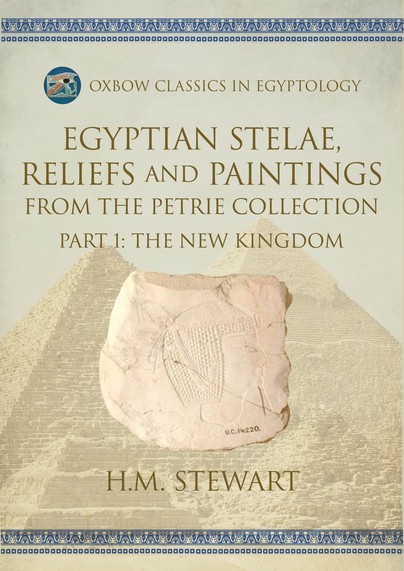
Format: Paperback
Pages: 138
ISBN: 9798888571248
Pub Date: 17 Oct 2024
Description:
This is a facsimile reissue of part I of H.M. Stewart’s three part complete catalogue of the inscribed stelae, reliefs and paintings acquired by Flinders Petrie from his many Egyptian excavations and intended as a teaching collection.
Over 200 monuments of the New Kingdom are described, translated and illustrated with comments on techniques and materials, and details of provenance, date and bibliographical references. The first section deals with royal monuments, mainly from the Theban mortuary temples and the Memphite temple of Ptah. This is followed by a section on relief sculptures for Amarna. Funerary stelae are divided into Osirian and Solar types and are followed by the votive stelae of private individuals. Many of the finest reliefs come from private tombs. The descriptions are accompanied by 53 plates of detailed scale line drawings. More than two-thirds of the monuments had never been published before this catalogue appeared and it was hailed, and remains, a major resource for scholars into this spectacular period.
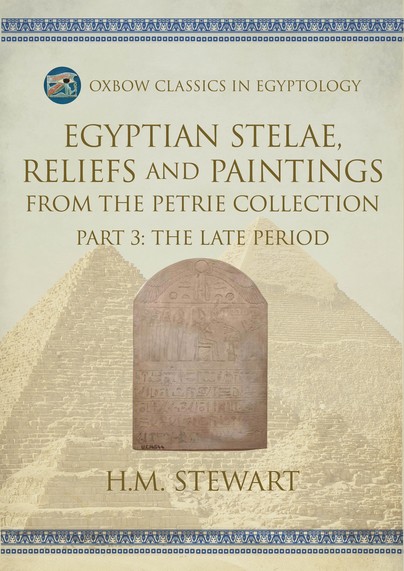
Format: Paperback
Pages: 110
ISBN: 9798888571286
Pub Date: 17 Oct 2024
Description:
This is a facsimile reissue of part III of H.M Stewart’s three part complete catalogue of the inscribed stelae, reliefs and paintings acquired by Flinders Petrie from his many Egyptian excavations and intended as a teaching collection. Over 140 monuments, primarily of the Late Period are described, translated and illustrated with comments on techniques and materials, and details of provenance, date and bibliographical references.
Royal and official monuments are more sparsely represented than for the earlier periods but include several items of particular interest, including a stela with a long hymn to Osiris and another recording a work of restoration at Abydos under Osorkon I. the continuing development of private stelae includes a common type showing owner at worship with many examples displaying scenes and inscriptions painted rather than carved on wood or limestone. Small votive stelae are dedicated to, for example, Thoth, Min, Ptah and Isis and include magical stelae intended to cure snake bites, scorpion stings etc. The catalogue also includes miscellaneous statute fragments, some being more recently identified pieces from earlier periods, including those identified as representing prince Khaemwesat, son of Ramesses III and Rekhmire, vizier of Tutmoseis III. The descriptions are accompanied by 48 plates of detailed scale line drawings.
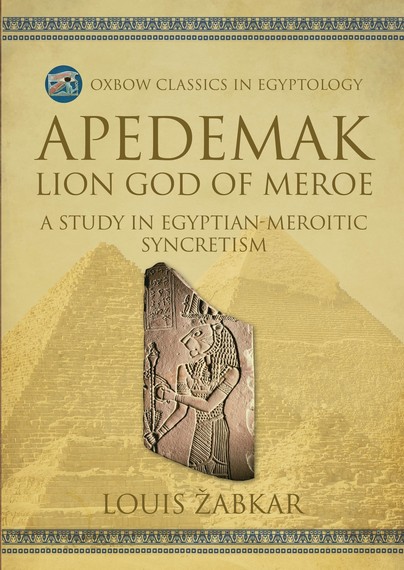
Format: Paperback
Pages: 224
ISBN: 9798888571262
Pub Date: 15 Oct 2024
Description:
The rescue excavation of Egyptian sites in advance of construction of the Assuan Dam contributed greatly to the understanding of the ancient Egyptian and Sudanese civilisations in the Nile valley. This book examines cultural relationships in the last centuries BC and first centuries AD centred on the ancient city of Meroe, which lies on the east bank of the Nile between the Fifth and Sixth Cataracts. It was one of two principal cities, and the centre of political and religious power, of a civilisation that flourished between the 8th century BC and 4th century AD, extending over the area of northern Sudan.
The Meroites were strongly influenced by Egyptian religion, architecture and art, adopting Egyptian hieroglyphs but later developing their own hieroglyphic and cursive script – representing the first of the ancient languages of Africa to be committed to writing. They worshipped Egyptian gods alongside their own deities, including Apedemak, here compared with the Egyptian lion-god Mahes and other Egyptian and Nubian lion-gods. A decorative figure found during excavations at Semna South in the Sudan is key to the discussion of the origin of particular features in representations of the Meriotic god and the extension of his worship to the north.The study, republished here in facsimile, shows that worship of Apedemak can be viewed within a wider framework of a contemporary religious and artistic trend, often referred to as a syncretistic trend or movement, which can be described as a process by which one deity could become assimilated with another with which it could share similar attributes, perform the same functions and exhibit the same representational features. Thus, old Egyptian gods and goddesses, their myths, legends and accoutrements, could be introduced into the new religious centres of Egypt’s southern neighbours, Nubia and Meroe, where they were adapted to new local cults and, in some instances, became associated with the principal native deities.
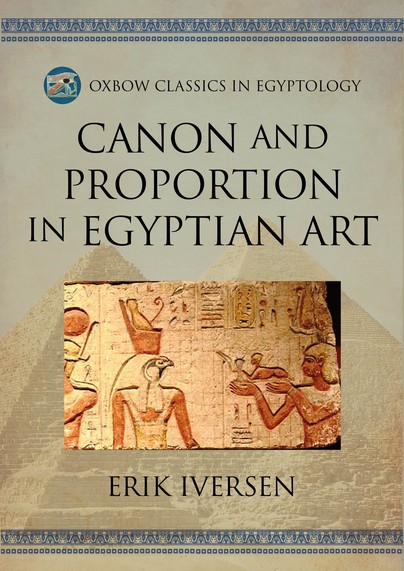
Format: Paperback
Pages: 134
ISBN: 9798888571224
Pub Date: 15 Oct 2024
Description:
This facsimile reissue of the 1975 second edition of Iversen’s Canon and Proportion brings back into print a seminal work originally published in 1955. Iversen describes a canon – that is, a set of rules of proportions – advanced and used by the artists of Egypt. In order to interpret the stylistic message of the Egyptian system of proportion he undertakes a study of the principles of its construction, an analysis of its modules and presents an unambiguous numerical definition of the ratios governing its units and parts, demonstrating its use with illustrated examples.
He contends that much of the art, especially tomb art, was never intended to be seen by mortal eyes and, as such, was designed to follow a set of rules governed by the requirements of religious and cultic traditions rather than purely aesthetic considerations. Painting and sculpture were largely not primarily things of beauty but magical entities fraught with fateful significance. The development and use of a grid for practical application of the system can still be seen in tomb paintings and is demonstrated in the proportional correctness of statues. The system was based on an accurate standardization of the natural relations of the various parts of human anatomy, such as the relation of palm to forearm and forearm to height, expressed in simple numerical terms geometrically reflected in grids based on the fist. Iversen’s treatise was not without controversy but this fascinating study remains a hugely important contribution to the interpretation of Egyptian art.
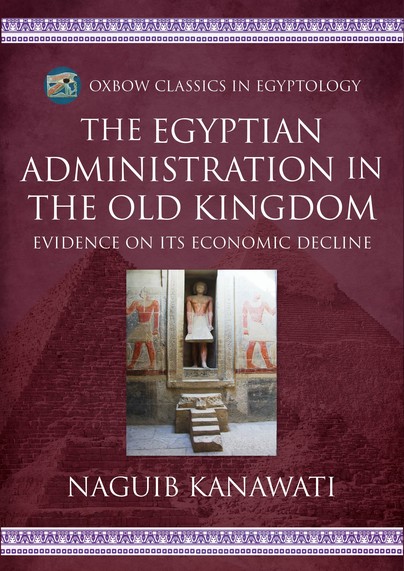
Format: Paperback
Pages: 172
ISBN: 9798888571668
Pub Date: 15 Oct 2024
Description:
A generally held belief is that there was a downward trend in the authority and power of the king and a corresponding increase in the influence of officials over the course of the Old Kingdom in Egypt. This could be seen reflected in the increasing size, complexity and lavishness of their tombs, the cost of which was generally met by the official himself. If the tomb owner died before completing his tomb, it was either finished by his son, or a close relative, or left in an unfinished state.
It was most unusual for the king to provide an official with a complete tomb. The Old Kingdom administration was divided into three tiers of officials below the rank of Vizier, and the study analysed tombs of each class looking for trends that would indicate rank on the basis of costliness, and through time. It demonstrated a general downward trend in the financial resources among officials of the lower rank, with more fluctuating fortunes in the middle rank. This facsimile reissue of Kanawati’s authoritative study shows that the trend for the higher officials initially was up, followed by a general downward trend. Overall, by the end of the Fifth Dynasty the lower officials were unable to build tombs for themselves. The same happened to the middle ones early in the Sixth Dynasty, by the end of which the higher officials, including Viziers, did not have sufficient finance to construct their own tombs.There is evidence that the administration at that time was inadequate: officials were dissatisfied and disinterested. While it is probable that it did not cause the downfall of the Old Kingdom, it resulted in a weak government, unable to cope with the wider economic and external problems of the end of the Sixth Dynasty.
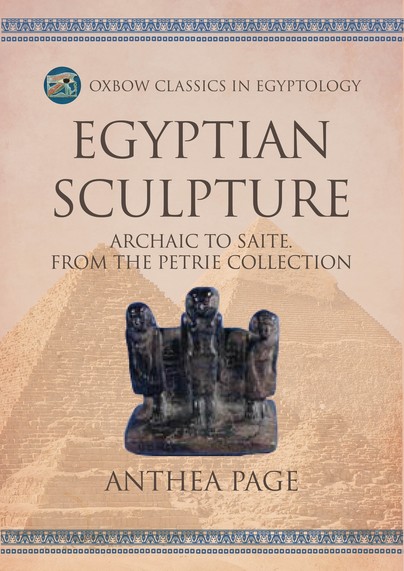
Format: Paperback
Pages: 134
ISBN: 9798888571200
Pub Date: 10 Oct 2024
Description:
This facsimile reissue of Anthea Page’s catalog of the stone and wooden statuary in the Petrie Museum makes available again a major corpus of material. The bulk of statuary in the museum was purchased since the finest sculpture from Petrie’s own excavations rightly went to Cairo and other museums. While the sculpture in his own collection covers the whole length of Egyptian dynastic history illustrating many different schools and qualities of workmanship, it does not provide a comprehensive view of the art of the Egyptian sculptor.
Nevertheless, the 174 items described and discussed cover a wide range of subjects and forms. Statues of gods and animals and types loosely classifiable as ‘figurines’ or ‘models’ are deliberately excluded and the corpus focuses on representations of royalty, priests, officials and unknown individuals (men and women), of varying status and possible ethnicity in a variety of poses. Statues of multiple individuals are represented as well as a statuette of a man and a monkey. The catalogue is preceded by an introduction by H. S. Smith outlining the history of Egyptian portrait sculpture, the religious ideas behind it and nature of patronage, and is accompanied by detailed drawings and translations of associated inscriptions. All pieces are illustrated by photographs.
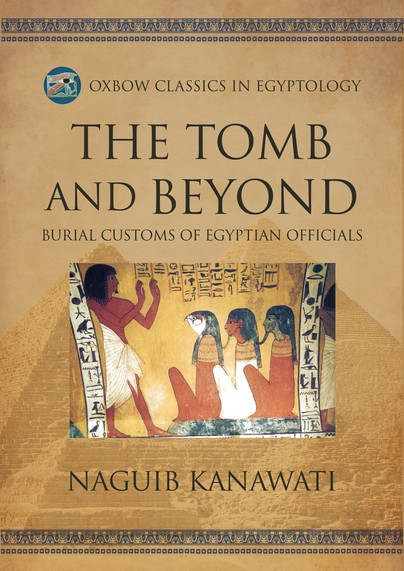
Format: Paperback
Pages: 144
ISBN: 9798888570876
Pub Date: 10 Jun 2024
Description:
The tombs, with their scenes, inscriptions, objects and human remains, represent our richest source of information for the understanding of Egyptian beliefs and practices, art and architecture and of many aspects of daily life. Detailed, scholarly reports on individual cemeteries and tombs are abundant but in this fully illustrated, more general work, reproduced in this facsimile edition, Kanawati provides an invaluable introduction to, and overview of, the key elements of Egyptian tombs from Predynastic to the Late Period. ¬The Egyptian dead enjoyed a continued existence in both the Netherworld and the land of the living – the individual possessing multiple entities that experienced different destinies after death.
¬The tomb provided an everlasting earthly dwelling and consisted of a chapel above ground where the deceased’s cult was maintained and offerings presented, and a burial chamber for the body. Either or both could be richly decorated with paintings, reliefs and inscriptions. Kanawati describes and illustrates the principal forms and features of architecture and nature and subject matter of decoration and demonstrates how tomb design and decoration changed through time.
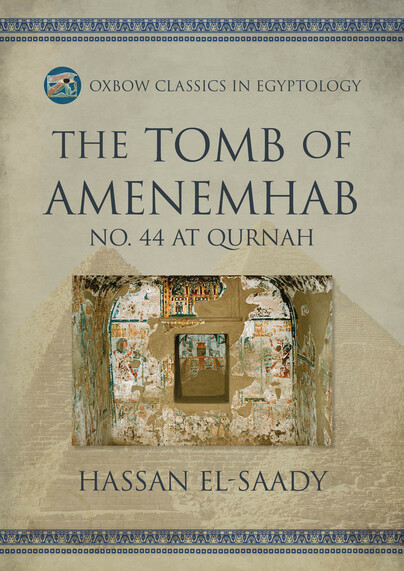
Format: Paperback
Pages: 136
ISBN: 9798888570852
Pub Date: 10 Jun 2024
Description:
This volume is a facsimile reissue of the full publication of the tomb identified as that of Amenemhab, a middle ranking priest of Amon. ¬The tomb lies within the lower enclosure of the major cemetery of Elwet Sheikh-Abdel Qurnah in ¬Thebes. It is cut into a perpendicular cliff of limestone and shale and is one of the private, so-called house-like chapel tombs of local dignitaries, mainly dating to the Ramesside Period.
The plan is a common form for Theban tombs, comprising a short entranceway leading into a broad hall, an axial passage and a long hall or shrine with a niche and it is oriented north-east to south-west with a maximum length of c. 9.3 m. ¬There are no side chambers or columns. The tomb decoration was first recorded by Sir Robert Mond but not published by him. Although richly furnished with brightly coloured paintings and text, much of the decoration was badly degraded and damaged. The burial shaft was not discovered. In this volume Hassan El-Saady provides a summary description of the tomb itself with a panel by panel description of the inscriptions and paintings, accompanied by photographs and explanatory line drawings. He identifies the owner of the tomb and members of his family, and though close dating of the tomb is difficult as no ruling pharaoh is alluded to anywhere within it, scrutiny of the style, content and arrangement of both the actual tomb and the decoration points to the reign of Ramesses II.
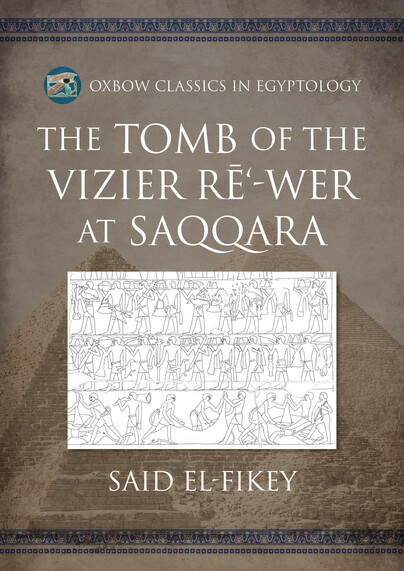
Format: Paperback
Pages: 88
ISBN: 9798888570890
Pub Date: 10 Jun 2024
Description:
The tomb of Re‘-wer lies in the south-eastern corner of the mortuary temple of King Teti, first King of the 6th Dynasty, beside the pyramid of Teti, in the Old Kingdom necropolis at Saqqara. Excavations in 1906–7 and in the early 1920s were not published and the tomb was re-excavated and partly restored in 1975–7. It comprised a paved courtyard within a temenos containing the rectangular chapel tomb, with surviving structure built of fine quality limestone blocks in inner and outer walls.
It is unusual in having two false doors in the west wall. The roof was missing. Nothing was recovered from a burial shaft that lies close to the tomb. The walls and false doors are adorned with inscriptions and reliefs. ¬This facsimile reissue of Said el-Fikey’s detailed description of the surviving structure, decoration and transcription of the inscriptions is accompanied by a full set of photographs and illustrations. No biographical text survived and the author considers the possible date of the tomb in relation to the adjacent architecture and the style of the reliefs, concluding that it most likely dates to the reign of Pepi I. He discusses indications for the personality, family situation and official position of Re‘-wer, which may suggest that he was father to a wife of King Pepi and that both were disgraced for some reason.
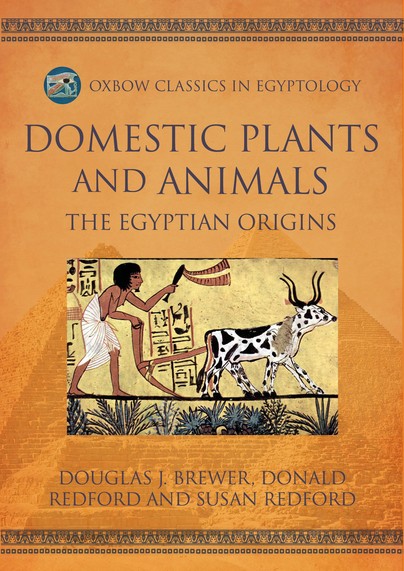
Format: Paperback
Pages: 160
ISBN: 9798888570791
Pub Date: 15 May 2024
Description:
This facsimile edition of a much acclaimed volume brings back into print a major study of the evidence for the domesticated plants and animals exploited by the ancient Egyptians. The rise of agriculture must be amongst the most important steps that humans have taken on their long road to the present day and marked the beginning of sedentary life from the Neolithic onwards and the development of civilization. Of the earliest civilizations, Ancient Egypt remains a particularly useful field of study: the physical remains are preserved by the dry desert environment and the Egyptians have left us with an abundance of written and pictorial records which go back over 5000 years.
Grasses, legumes, vegetables, fruits, domestic animals and pets are all considered in this comprehensive study. It is profusely illustrated from Egyptian wall paintings and reliefs, which provide us with a vivid record of the Egyptian’s use of plants and animals in their daily lives. Thirty years after its original publication, this groundbreaking volume remains an invaluable sourcebook for archaeologists in all fields and to anyone interested in zoology, botany and early agriculture.
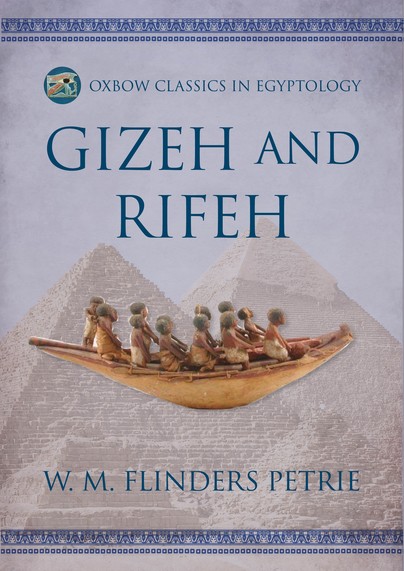
Format: Paperback
Pages: 166
ISBN: 9798888570814
Pub Date: 15 May 2024
Description:
This is a facsimile reissue of Flinders Petrie’s 1907 account of excavations at Gizeh and at Dier Rifeh in Upper Egypt, just south of Asyut. At Gizeh excavations focused on a cemetery lying on a ridge about 1 km south of the Great Pyramid while work at Rifeh extended from a well-known Coptic village for about 5 km southwards to beyond the village of Zowyeh, and mostly investigated several cemeteries in the plain of primarily XIth–XVIIth Dynasty date. The area contained numerous Coptic settlements and the ruins of Coptic monasteries at Balyzeh and Ganadleh were excavated, producing many fragments of Coptic manuscripts.
A chronologically ordered account of the tombs excavated begins with those at Gizeh followed by Zaraby and Zowyeh and then Rifeh. Those at Rifeh produced around 150, previously rarely encountered, ‘soul houses’, being clay models of contemporary dwellings used as offering trays, which are discussed in detail. A classification of pottery is provided. Later burials were also excavated at the cemeteries close to Gizeh where three Demotic inscriptions and several cartonnages of papyri were recovered. The Demotic inscriptions and Coptic manuscripts are described with translations.
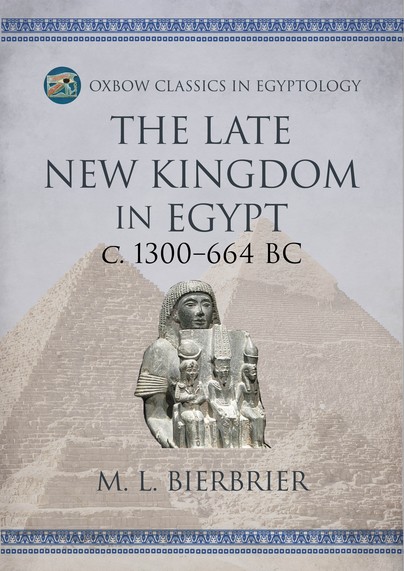
Format: Paperback
Pages: 176
ISBN: 9798888570838
Pub Date: 15 May 2024
Description:
The period of Egypt’s Ramesside empire is best known for its foreign wars and monumental buildings but the chronological history of many of its rulers and pre-eminent priests and their genealogies was poorly understood. While it was not possible to fi x the chronology exactly, a combination of known dates or date ranges, such as for the accession of Ramesses II, and the determination of family trees that extended over a large period, enabled Bierbrier to present a much closer definition of the span of individual dynasties and their key figures than had been possible previously. That volume is reissued here in facsimile.
An important source of information is the genealogical references on funerary statues and tomb paintings, though vocabulary used is limited and often ambiguous. There are also several types of statuary, set up by individuals for different purposes, most frequently by sons or descendants to cause the name of the deceased to live on, many of which may have been created before the death of the individual commemorated. Taking into account these, and other difficulties, Bierbrier’s painstaking research proved groundbreaking in elucidating the chronology, sequences of events and family connections of the period from the official families of the XIXth Dynasty through those of the XXVth.
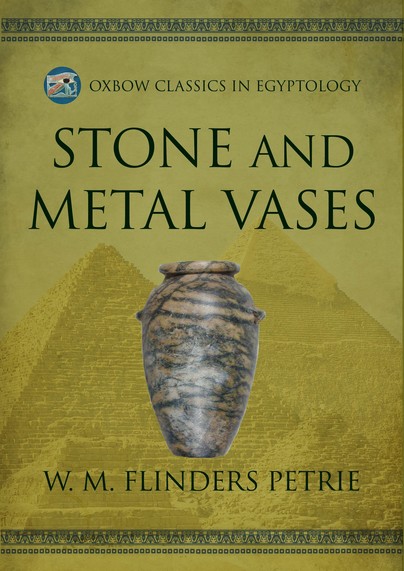
Format: Paperback
Pages: 86
ISBN: 9798888570739
Pub Date: 15 Apr 2024
Description:
This facsimile edition of Flinders Petrie’s 1937 typo-chronological catalogue of Egyptian stone vessels and Egyptian and Greaco-Roman metal vessels has been long out of print. It was a first attempt by Petrie to take an overview of the vessels recovered from numerous locations housed in major collections of the time, principally his own in University College London and over 700 items in Cairo Museum. Dating was derived from a variety of sources, the most important being that of royal names either on the vessels themselves or on associated materials in tombs.
Examination of large, closed groups of objects from major royal tombs, each fixed to one reign, enabled development of a robust chronology for quite detailed changes at least for earlier dynasties, which could be extended by careful analysis of key traits. Each part is therefore arranged by major typological form with a discussion on derivation, chronological development in form and decoration and modes of manufacture. Both catalogues are fully illustrated with comparative charts of key features, line drawings and photographs of nearly 1000 stone and over 100 metal objects.
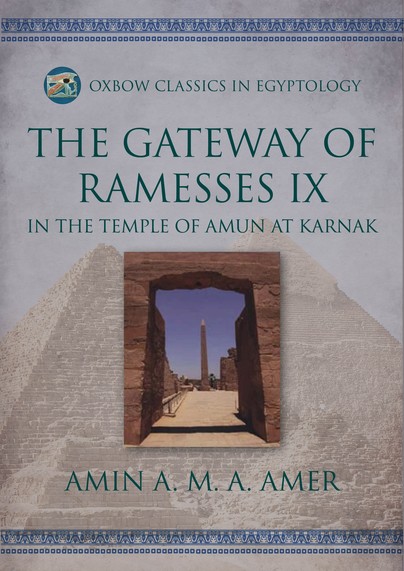
Format: Paperback
Pages: 74
ISBN: 9798888570753
Pub Date: 15 Apr 2024
Description:
Amin Amer’s 1999 study of the Gateway of Ramesses IX at Karnak, Egypt, is presented here in a facsimile reissue. The Gateway is a little-known major work, part of the great temple at Karnak, built by one of the last kings of the Egyptian empire after a long period that saw little building work in the temple complex. The rather modest, by Karnak’s standards, construct lies at the northern end of the court ‘of the Cachette’, north of Pylon VII, and leads into the southern end of the narrow court of Pylons III and IV, presenting an impressive entrance to the main temple of Amun.
A prominent stela of Ramesses IX and Amun lies beyond it. The Gateway was part of a building programme, decorated with statues and building-texts, undertaken by the high priest Amenhotep who clearly sought to emphasise the importance of the contributions of the king and himself to the temple and worship of Amun.A brief introduction to the works of Ramasses IX at Karnak is followed by a detailed description of the scenes adorning the Gateway with a translation of the inscriptions and a discussion of the role of the Gateway and its decoration. The descriptions are accompanied by drawings of the hieroglyphic texts and photographs and line drawings of the entire gateway and its facade.
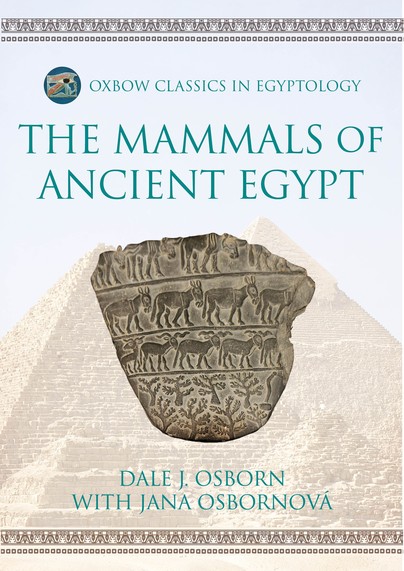
Format: Paperback
Pages: 228
ISBN: 9798888570777
Pub Date: 15 Apr 2024
Description:
Various attempts have been made to systematize the mammals depicted in Egyptian tomb paintings, inscriptions, carvings, figurines and other objects, and as mummies, but there are many discrepancies, variable spellings and names, including now obsolete Latin names, and mis-identifications. The Egyptian artists themselves sometimes used the wrong hieroglyph or drew some parts of animals incorrectly. Dale Osborn’s comprehensive reassessment, presented here in a facsimile reissue, catalogues around 100 separate species, ranging from hedgehogs to hippopotami, Anubis Baboons to Zebu cattle, that can be identified in Egyptian art from prehistoric, through Pre-Dynastic to Late Kingdom times.
Profusely illustrated, the catalogue is arranged by Order, then species, each entry providing the relevant hieroglyph, a brief description of the animal, its natural habitat and distribution, and a narrative on its depiction in Egyptian art through time, by location, types of illustration or object, and context (tomb etc). Known errors and discrepancies, either in original scripts or classical and/or modern literature, are listed.Mammals are abundantly depicted in tomb paintings and inscriptions. Common scenes include hunts, processions, wild animals being led on chains, domesticated animals in household and working environments, and satirical scenes. Such scenes provide many insights into the lives of Egyptians and their relationships with animals, that are further enhanced by many decorative figurines and statues and, often poignantly, by the mummies of mostly small animals including cats and dogs.
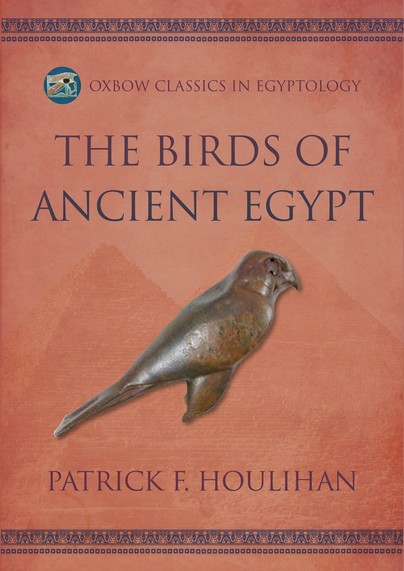
Format: Paperback
Pages: 222
ISBN: 9798888570289
Pub Date: 15 Jul 2023
Description:
Hailed as a sumptuously produced and finely illustrated outstanding contribution to ancient Egyptian studies, this facsimile reprint of Patrick Houlihan’s 1986 comprehensive study makes a welcome return in the Oxbow Classics in Egyptology series. Animals of all kinds are amply illustrated in Egyptian art, none more so than birds, in both secular and religious contexts and in hieroglyphic scripts. A great variety of bird species has for millennia made twice yearly migrations passing over Egypt, which is also an important overwintering area for many.
These migrant birds, together with indigenous species were an abundant and easily exploited source of food for ancient Egyptians, for domestication and status display. Tomb scenes displaying birds provided as food for the deceased are abundant, as are procession scenes of offering with bearers bringing gifts of fowl. Many birds also had religious associations. Houlihan provides a systematic and unparalleled survey of all the bird life depicted by the ancient Egyptians in art and hieroglyphic writing – some 72 species (plus bats) – with a list of known mummified species, discussions on their religious and secular associations, and many illustrations. Their present-day distributions are compared with that known from the time of the Pharoahs. A checklist of the birds of modern Egypt is provided by Steven Goodman.
















